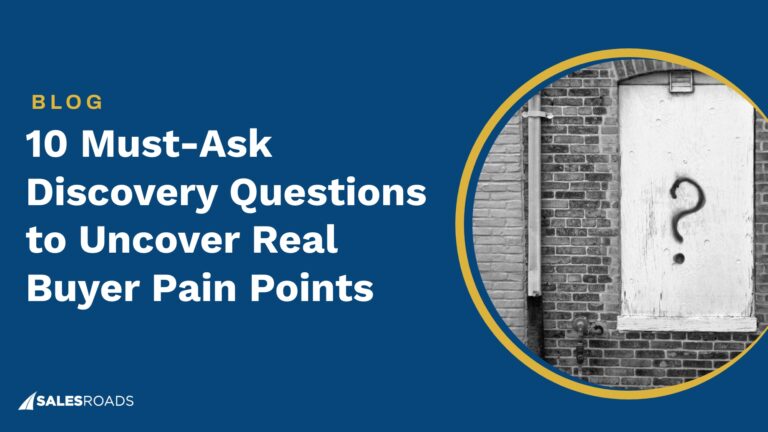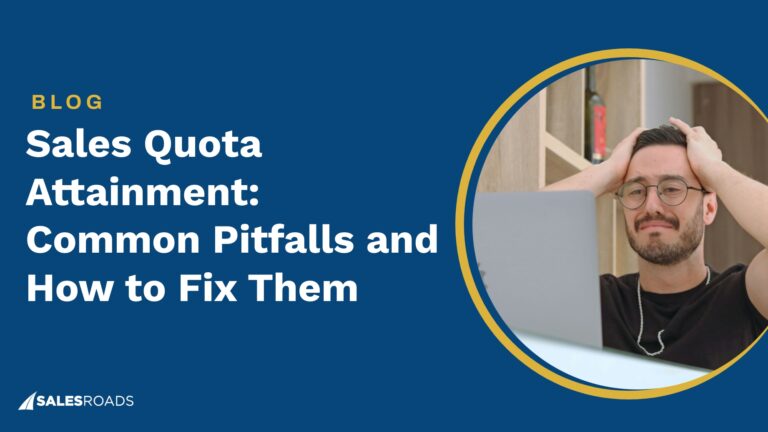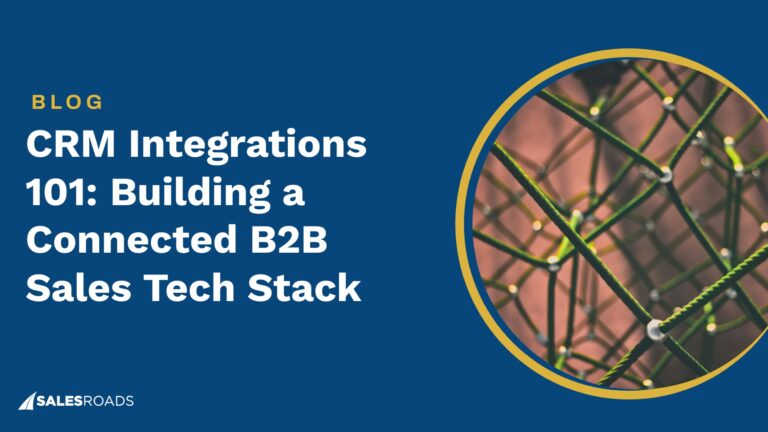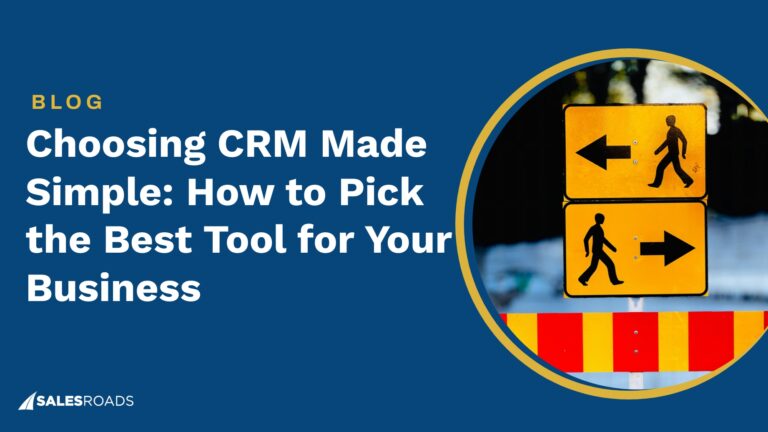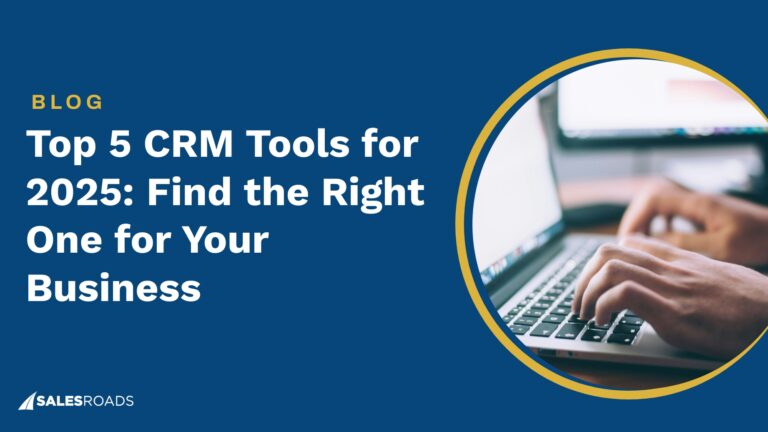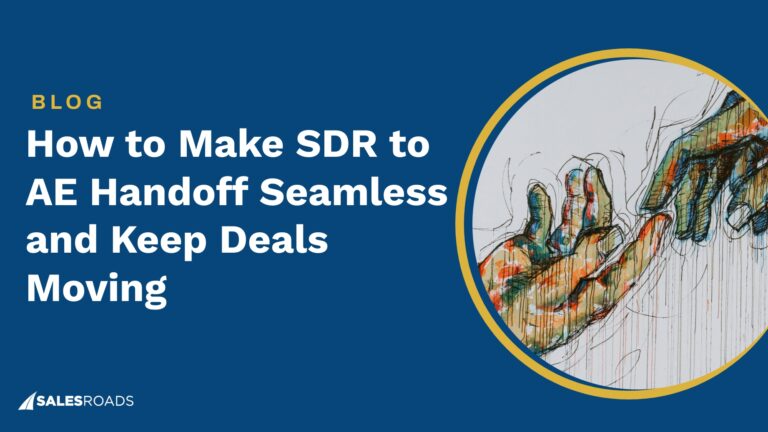Sell Like A Leader – Episode 17
In this episode, we dive into:
– Cold email playbooks for sales teams: The most important thing in the outreach approach (is not personalization!), how to start building a cold outreach playbook for your team, defining a strategy to engage and nurture your leads, how to generate appointments with higher buying intent, deciding when to do cold calling and when to do cold emailing, omnichannel vs. multichannel outreach approach, the hidden cost of AI in SDR teams, and how your team can improve email deliverability.
– Rapid Fire Q&A
About Michael Maximoff
David Kreiger chats with Michael Maximoff, the owner of Belkins, one of the top-ranked B2B lead generation agencies. Michael specializes in creating budget-smart strategies that deliver impactful growth solutions for clients and is also the driving force behind the newsletter “From Zero to Agency Hero” and the voice of the popular Growth Podcast.
Podcast Key Takeaways
- The first step in crafting successful cold email playbooks is to invest in lead sourcing. Michael emphasizes that understanding the personas and targets is essential for creating a great targeted lead list. Simply buying a list from sources isn’t enough; you must know how to use the data to target correctly.
- To ensure smooth email deliverability, avoid tracking open or click-through rates, limit your outreach to 50-100 emails per mailbox, use corresponding email services, utilize dynamic routing tools, and conduct regular audits on your messaging for errors.
- Michael says before jumping straight to sending emails, do A/B testing on various channels to gather intent data. It helps determine which channels make the most sense to scale for your specific situation.
Connects
Connect with Michael Maximoff: https://www.linkedin.com/in/michael-maximoff/
Connect with David Kreiger: https://www.linkedin.com/in/davidkreiger
Subscribe to the podcast and follow our Podcast LinkedIn page so you don’t miss any episodes!
Transcript
David: Welcome back. This is the Sell Like a Leader podcast, the podcast for revenue leaders who are on a mission to cultivate a high-performing sales team within their organization. I'm your host, David Kreiger, founder of SalesRoads, America's most trusted sales outsourcing and appointment setting firm.
Today, we are bringing you another revenue leader, Michael Maximoff. I've gotten to know Michael over the past few years. He runs an amazing agency called Belkins. They are a B2B appointment setting firm, and he has spent over a decade building Belkins into where it is today.
He specializes in creating budget-smart strategies that deliver impactful growth solutions for their clients. And he is just an amazing wealth of knowledge, a great person. And I recommend you getting to know Michael, if you are looking to build B2B appointment [00:01:00] setting programs. Michael, thank you so much for joining me on the Sell Like a Leader podcast.
Michael: Absolutely, David. Thank you so much for this incredible introduction. Every time we engage and work on something, it's just an amazing product at the end. So I'm very excited to having this conversation again with you and opening up where are we going to go with this?
David: Yeah. Well, what I would love to dig into—cold email and cold email playbooks. So we have a lot of revenue leaders here who lead teams and they're trying to figure out: how do I roll out cold email to my team? How do I build that as a channel? To build the playbooks, build the strategy, make sure that my team's doing that or potentially leveraging great agencies like yourself to help them do it.
And so we'd love to tap into your insights in that and really start off with—I think a lot of people have at least felt or think that there's some changes going on in the email landscape over the past few years. And so [00:02:00] we'd love to get your perspective on what you think has changed, what hasn't changed, as an overview to our...
Michael: Absolutely, David. We'd be happy to elaborate. Belkins is still heavy on email. We are utilizing email as our main channel for the majority of our customers. Last year we rolled out a new program where we start complementing email with some intent calling, WhatsApp, SMS, LinkedIn prospecting, but still we're heavy on email. So it's our main playbook even at this point.
Now, if I think about what has changed and generally where we are at right now, I think what's happening is we've seen so many different tools and technologies—AI-powered especially—that helped us to, or enabled us to be able to create some kind of personalization at scale.
Clay is a good example, right? When you look for different buying intent or different sourcing, different personalization points to be able to personalize your outreach and be more relevant, right?
What's happening is that more and more companies are employing this [00:03:00] approach, but in my world and where I'm standing, this approach doesn't really solve the problem. And the problem is the relevancy, right?
What I'm selling is relevant to the people I'm reaching out to and how clearly I can communicate my value proposition and how I understand the messaging behind it, right? I think that is the key.
So I think that my team have been more successful in this space just because we've been particularly focusing on that aspect—not how we're going to scale this in terms of personalization and sourcing and different automations, how we can make it more efficient—but really how we can take a product, take the buyers, and by understanding the buyers and the product, how we can clearly communicate the value proposition that would resonate with that buyer.
And if we can do that, we are successful even with some classic cold outreach approach. So you don't even need to personalize it, but it's right.
So short [00:04:00] answer: this space is changing because it's powered by technology. Now in this specific instance, companies that are following the technology and just utilizing it as their main core driver of a change fail because they forget about what is the most important in the outreach, right?
Understanding your buyers, understanding your product, making sure that the messaging resonates with them and it's relevant, and then the personalization part or the approach part is actually secondary.
David: So Michael, I love the way that you frame that because I think a lot of sales leaders, first of all, feel like, okay, if I'm going to do cold outreach, I need to use all this AI, I need to use all this technology. And it is overwhelming, and they get caught up in—sometimes in the technology—maybe also because that seems more fun than building the cold outreach.
But what I'm hearing from you, and correct me if I'm wrong, it's still about the fundamentals. It's understanding the buyer, it's understanding the different [00:05:00] personas, the product itself, and how that is relevant. And so I think that's really important for sales leaders to hear.
And so if we go to those fundamentals, can you talk about your process or what you recommend for building a playbook? Based upon those fundamentals, how do you start understanding the personas, and then how do you leverage that understanding to make sure your product is relevant and adding value to them?
Michael: Absolutely. So most of my professional career in B2B outsourcing, we're focusing on working with ICP—Ideal Client Profile—and understanding it. Now what I've seen is that it's not just about the ideal client profile, but more about buyers and the buyer journey and who those buyers are. So we start doubling down on actually understanding the psychological profile of buyers.
So let's say I am selling to CMOs of mid-size manufacturing companies—like who those people are, what content they consume, what platforms they're using, what channels they're mostly active [00:06:00] at, how they communicate with the external world, what news they're reading, what they're Googling. There are tools like SparkToro that could allow you to research that information.
And then what my team is doing is that we are doing this market research and preparing a report where we can understand the buyers better. And then we are connecting the dots between what the buyers are doing and then what the clients are actually doing with their digital marketing. What is that channel that a client has? How they're utilizing this channel, right? And then we're looking at what is missing in this puzzle, right?
Very often, we've seen that customers are very heavy on Facebook or Instagram, right? Whereas their buyers are on LinkedIn, right? Or vice versa, right? They are heavily pushing on LinkedIn, but the buyers are on Twitter, different communities and groups that you have access to.
Or you're doing cold outreach expecting to donate online meetings, but your buyers prefer face-to-face offline meetings. So they're heavy on [00:07:00] roadshows, they're open for face-to-face meetings, but they're not as active on any virtuals, right? That happens as well.
So the approach is not just looking at the ICP, but better working with the buyers and the psychological profile of the buyer. That's the first step, right?
Then the second step would be to looking at your entire digital profile—like your website, your social, your product description. Is everything that I have there—does it actually communicate the value proposition for these specific buyers? Is it clear for them?
Does it resonate around the problem that they have? Because, and this is something that I started seeing more and more—companies are talking about the solution and less about the problem, right? But the problem is more important right now and how you're addressing and solving the problem.
So the first step, understanding the buyers and the psychological portrait of them. Then the second one is to looking at your entire messaging and [00:08:00] your entire digital profile to see whether the messaging resonates with them.
So that's the two most important aspects, right?
And then the third one is when you're launching channels, it's A/B testing different hypotheses and giving it time to be able to find the right approach, the right messaging, the right angle that would resonate with them. Then you can scale.
And this is a very important part because with the technology available to us, most of the decision makers are expecting short-term results. They're thinking that lead generation is like a—I have two months or three months that I wanted to try, and that’s it.
But it's more as a laboratory where you know that this channel can work. Now, the question is: what can be done for this channel to work? So giving enough time for the A/B testing while still working with the first buyer personas and then the overall messaging everywhere and tailoring it to make it relevant to the people. And then A/B testing [00:09:00] it in terms of the approach—how we're using.
These are three very basic, very fundamental, but so powerful things that anyone can do. And if they do this right, then they would be very successful with cold outreach.
David: So I love how you break it down. And I think that going off of the theme from your first answer—it's less about the tools and more about the messaging and getting the messaging right. And also having the patience to know that it's hard to get the messaging right right out of the gate. It can happen.
You can get kind of lucky, but you need to know that you have to have an infrastructure to be able to iterate and test and see what's working and what's not working.
And so I think that's great guidance for sales leaders as they think about developing the playbook and creating that uber strategy.
From there, how would you advise leaders to be able to translate that strategy to their SDRs who are doing the prospecting? What are some actionable steps that they need to take from there to be able to allow their team to execute on that [00:10:00] strategy?
Michael: So once this first initial foundation is done, then the question is, okay, how I can source relevant leads or relevant prospects, what technology I can use for that, how I can build my list, then what technology I can use to actually build a powerful effect to outreach, and then how I can, after I reach out to and engage with prospects, how it can effectively engage with them further, nurture them, convert, have a kind of type of conversion, post call, et cetera, et cetera, right?
These three things. And then you are just tackling each and every task of those separately, right? So you just design it as this three-part process, and then each part should be addressed either with a dedicated person or with just someone that takes ownership of that part, but you need to measure each and every aspect separately.
So, for example, like if I'm sourcing leads, where I'm getting my leads from.
Can I build a list? If I'm building the list, what can I do to build the list? Can I get some [00:11:00] downloadable or lead magnets? Can I build an event around it so I can source leads? Can I run some advertising, right? Or I can. Source leads from in a different way, right?
Then the second part is like what technology I can use for an outreach within the scope of my specific, right? For example, some customers might have 100 accounts in their sweet spot that they would be reaching out to. That's it. Some would have 10,000, right? So, depending on the volume and depending on your KPIs and your targets, you will then identify which technology suits better.
Some technologies. Like Clay, for example, might add both sourcing part and outreach part in them that can work for different businesses, a hundred percent. Some would say that we need more customization. We need more multi-channel capabilities. So we would need Outreach.io, right?
Some would go with Reply.io. Again, depending on the budget, depending on the people, right? But I would definitely look at each part of the process as a separate task that I need to solve, or challenge them to solve. [00:12:00] Because, and you know this, David, it's not as easy as it was like 10 years ago, to run any outreach, even if you're fundamental.
There's a lot of different roadblocks, with like email deliverability and with scale of an outreach and with spam and with opens and replies and CDRs and connect calls and all of them. And there's a lot of different specularities. You would address them one by one after you've clearly identified different parts of the process that you wanted to work with as a different challenges, and then just tackling them one by one.
David: So I think that's a really clear outline for folks to be able to start. And I think one of the key things, too that I agree with and where you started on this section is the lead sourcing. I think a lot of times people either underinvest both in budget.
And in time on the lead sourcing. And if you think about what your team's worth, opportunity costs if you don't have a great targeted lead list you're not going to have success. And also it doesn't mean just buying ZoomInfo or whatnot. You've [00:13:00] got to really have, and that's where you started with your, understanding the personas and the targets.
You've got to be able to know how to use it to target correctly. And so any tips on that to leverage the tools
Michael: Absolutely. I have a client that let's say comes to me and say, Hey, Michael, I want you to build the campaign. Here's my ICP. We have, let's say, 500 accounts in our sweet spot. That's it. Most of them expect the result that we're going to be converting those accounts and those contacts quickly.
There will be certain percentage. Yes, we can get some low-hanging fruits. Some companies that are looking for this. It's just a matter of chance, right? When you look at it differently and say, okay, we have these 500 companies in our sweet spot. How we can build our go-to-market strategy? For the next three to five years to engage and nurture as many of those through multiple channels, not just through the means of cold email, but rather like how we can be more strategic about building relationships with all of those companies.
So then there will be a two-way problem, right? The first one, how I can source the list. So, how I can know all the accounts, all relevant people in [00:14:00] those contacts, and then the second one, how I can build the powerful outreach to engage with those.
But when you think about the five-year plan of converting as many of those accounts as they can, then it's not the matter of how I can attack them quickly and then get as many of them, but rather how I can be smart about building a relationship with them.
So in this way. You're thinking differently about building the list. With the first case, you are buying the list or sourcing the leads from, say, ZoomInfo or Apollo, is a good example, trying to get them verified and then trying to send different outreach or just engage with those people, right? With the second option, when you think about the nurturing part of it, then you first build the list or source the leads.
In any way, shape, or form, then you verify each and every account on an account and personal level. And then you think about what is the first or the second touch that I can make with them. Maybe cold email shouldn't be the first stage or cold calling. Maybe first I can run some [00:15:00] advertising just to see who engages, who are viewing the ads, who are clicking.
Then maybe I can create an event that will be speaking about the problem, and then I promote the event to them. Then maybe I will start connecting with them on LinkedIn and building the network. And then when I connect all of this, and I have all the intent around it, then I can say, okay, I have a process where I can talk about and put my company in front of these people in a more soft matter, with a more organic matter.
I can nurture this database, and I can track all the intent points or all the engagements that they have with my brand. And then those that show any engagements, then I can connect with them. So, essentially, you're looking at the buying journey from the standpoint of awareness, activation, engagement, conversion, and retention, right?
Whereas most of the companies, when they have a new list, they are looking at the conversion like, okay, how I can convert. And then when you step and say, okay, there's still awareness, there's still activation, engagement parts, so [00:16:00] if you source the leads but essentially push them through these first initial stages up to conversion, then the conversion would have much higher output than you would just do when you just jumped right to that stage.
So when you look at this, sourcing of the leads is one thing. You can source it with any way of shape, or form. But then, sourcing these leads doesn't mean that you will convert the right amount, or you will build a relationship with those just because most of the companies are jumping to the conversion stage, right?
What I suggest and what we've seen success in is after sourcing the leads, looking at that awareness and activation stages first, and seeing what channels you can utilize and how. And once you've done this successfully, then you can move to the conversion stage, and that in that way, the conversion stage will be much higher and then in that conversion stage, you will have not a sourced lead list, but a built lead list or collected lead [00:17:00] list, right?
Because through those first stages, you would generate so many different buying intent and engagements and different signals from buyers. Then the list during conversion stage would be much higher quality, and you will have much higher buying intent, appointment rate, and so on and so forth.
David: And to do that effectively, you go back to that. The playbook that you talked about, you look at the channels where these personas live, and then you serve them up ads to really do it with the messaging you think might resonate the…
Michael: It might be advertising, might be offline, might be different content, PR, for example, might be even event. Like even give an example, like you're sourcing the lead list and then you're sending cold emails to book meetings, right? What I would do if I didn’t work with this audience before, they don't know about my company.
What I want to build some kind of first foundational relationship. So what I would do, I would run a few events, create LinkedIn pages, events, some webinars, or some any type of events. And I [00:18:00] would invite the people to participate again, talking about the messaging, the right value proposition, the problem discovery, and then those that engage, open emails, connect with me, do some other stuff.
Then once they engage with my brand, then logically I can follow up with something else, right? Or with, for example, some lead magnets or some downloadables that would help them in their role, right? We've started even at Belkins generating more content to download that would be relevant to the key decision-makers to be able to again, build some preliminary relationship with them instead of just having our SDRs reaching out to them and just booking meetings with them.
Because at the end of the day, like I can be a smart, painty ass and just create some kind of campaign that would be—make people smile. And then you would tell me, okay, Michael, I'll give you this one. I'll get on the call. But that conversation is not relevant, right? And what we've seen is that so many companies in our space are struggling because [00:19:00] even though sometimes we can book meetings, those meetings are not converted into closed deals for clients.
So the question I was trying to solve all these years and addressing right now is how I can generate appointments for our clients that have much higher buying intent. So they are further in their buying journey.
And for that, I couldn't solve that if I'm jumping into that conversion stage right off the bat, but what I can do is I can work with customers to build that awareness and engagement parts first, to be able to build a list and nurture that list to the point where conversion makes sense, and then help with the conversion, and then push that forward.
Yeah.
David: That's great. And how long do you usually do that engagement or awareness period before you start the cold outreach, or is it all somewhat simultaneously?
Michael: We're trying to do it simultaneously. We're trying to split the list. And essentially, by the matter of the A/B testing, we are essentially testing one audience that would [00:20:00] consist of, let's say, 10 to 20 of the list with a certain messaging. They go through a certain first channel.
Then they go to the second and third, and fourth channel in the rotation. And then every next cycle, we're adding, with a different messaging, a new audience, and then testing in this way.
So we are not just testing the cycles and the channels, but also testing the messages simultaneously to see, and then fixing the messaging as we go to find this. But again, I want to be completely open about this. It's not for all the companies. It does increase the budget. It does increase the time to deployment of this program. In our organization, we have industries that we've seen that we're more successful with.
So being the tier one, being the ones that you can run a good, solid outreach campaign, and you can be fine, right? And the tier three being in a very high competitive space where whatever you're doing, if you're not building a more around the 360 go-to-market strategy, you won't be successful because at some point in time, that buying [00:21:00] journey, there will be a drop down.
David: And so thinking through the different stages and going towards more of the end, at least for what you guys work on at Belkins, which is the convergence into appointment. You touched on this at the beginning. You said, certain times, you're going to cold call.
I think you mentioned certain triggers. Do you want to talk a little bit to sales leaders as to when you feel like a cold call is more relevant and when email is more relevant or important?
Michael: So I would definitely go back to that buyer persona research and just understanding the channels that they're using more, right? Some buyers are heavy on the phone, some buyers more traditional, some are more heavy on email. So I would do that. I would also look at the different positions and titles of the people.
So we've seen that, for example, reply rate for C-level executives for email is around 3.2 percent based on the recent study that we did, whereas [00:22:00] for non-C-level titles, it's 5.6%, right? So in a way, like depending on your conversion results, right? Maybe hitting the phone for those would have or yield higher chances, right?
So the point I'm making is depending on what channels your buyer prefers, you can use them. And then the third one is I would definitely do the testing. So we can do any guessing with you, or I can provide you with any data, David, and it might be fair, but you would need to know how it's exactly in your specific situation, right?
So I would do testing. I would run email as the first channel and then add calling or add calling and then run email as the second channel. Add other channels, do the LinkedIn, then do the ads. And then I'll just compare the conversion and then see, okay, these two channels make more sense to scale or I'm doing them, right?
And then also it's the matter of the capabilities. So for example, like some people can have great email [00:23:00] capabilities. Some would have more calling capabilities. Some would have predominantly great thought leadership and social selling on LinkedIn. I would definitely utilize that channel.
I wouldn't put everyone in that specific, hey, this is the best, right? In the Belkins case specifically, like we've been always heavy on email. So we're trying to open up with email, for example. But we've seen recently that advertising works really well. So in case we have budget, we're able to open up with good landing pages, event lead magnets, you know, some LinkedIn ads.
Build some kind of awareness then and then follow up with email, and then add—we call it intent calling. So what we're trying to do is we're trying to build up prior engagements, and then depending on the engagement level, then we do the calling, right? So we are using not a multichannel calling, but rather like a personalized one-to-one calling where our SDR can make a 15, 20-minute research before doing the calling.
But then let's say we're going to do [00:24:00] you know, 200 calls a week or 500 calls a week, but those are going to be very high-intended calls that will convert us more, right? So we can do email, LinkedIn, calling, SMS, and then adding depending on the engagement and depending on the conversion, adding other channels.
So I am a huge believer right now that the omnichannel works better than the multichannel.
Omnichannel helps us to create a more effective buying journey. And depending on the previous step, we can customize the next step. So in a way, like if our clients are opening emails about the recent report that we've done, then our next conversation, our next touch, would be relevant to the previous touch rather than being completely independent from the previous touch.
And they will be learning about Belkins from a different way. So in this way, it might work really well.
David: You also touched on that you don't necessarily need to use AI for the outreach, but are there any areas where you think it is effective to use AI in cold outreach?
Michael: That's a great [00:25:00] question, David. I have a strange relationship with AI, to be honest with you. It's like there are two camps, and I’m part of the camp that is like non-AI SDR camp. I know. It's just I was more natural in that camp, so I stick to it right now.
So where I see the AI works really well is in the research part where you can optimize the research part. I've seen AI work some kind of great where you build those psychological portraits of people, and then you're trying to personalize your outreach depending on that.
I personally use it in building up some outlines and some structure and some other things. Now, creating content with AI—we are not doing it. And so when I think about the AI, my biggest problem is the replacement of the skill. Hear me out.
So basically, I have an SDR and I have a senior SDR that is great at what she or he is doing, right? They know how to identify accounts, how to convert with them, build a relationship, [00:26:00] convert, book—whatever, right? If I give any AI, ChatGPT or Twain, or any other AI, for them, it will enhance their capabilities. It will open up different things for them, right?
But if I give the same AI to my junior SDRs that haven't been in the trenches for so long, they haven't been successful, they're heavily relying on AI to do the job.
So I'm essentially replacing the skill set that they would have to develop over the years with an AI creating a very mediocre type of content or mediocre post or mediocre outreach strategy or anything mediocre, and it builds up a certain momentum for those junior SDRs, then they all rely only on that as their way out.
So all the businesses that are implementing heavy AI, they're essentially—they're shooting themselves in the leg over the long period of time because they're trying to make it more efficient, to simplify. But over the course of three to five years, they're going to build up the team that's not going to be thinking [00:27:00] that's not great for their career, that they didn’t struggle.
They were not as creative, and they heavily relied on the technology and on the scale. So those companies will then go to me and to you, David, for the senior SDRs that would help them to build a strategy, help them to create the momentum, right? Because they didn’t know how this works.
So I think like where we are going, then either there will be companies like us that will be heavily focusing on building that expertise and going through the struggle to find the right approach and then teaching everyone how this approach works, whereas right now we've seen that falls under the in-house teams, but we've seen that more and more in-house teams trying to replace people with tools, with AI, being more effective, being more—I call it—mediocre in their approach.
Even if it works right now, in a way, then long term, we've seen in three to five years, then the way they will be deploying a good, solid strategy, there will be only a few companies that will be doing this [00:28:00] and more and more companies will be just struggling and wouldn't know why they're struggling. And the answer is that you just—you'd spent three next years implementing tools instead of learning the stuff, right?
That's where I'm at.
David: That's an interesting perspective.
So I want to ask one last question that's more tactical and technical. And then we need to start wrapping up here and get to our rapid-fire questions section of the podcast. But I think something that's on a lot of folks' minds—leaders' minds—is just the deliverability changes and things that are happening with Google and Microsoft.
And how many emails can they send out? Can they put links in? Things like that. What's your perspective on the deliverability aspects of cold email?
Michael: I can give several exact tactics that we're using. First one, you're not tracking everything, anything. So you're not tracking open rates. You're not tracking click-through rates. You don't add any pixel, anything, right? That's just—forget about this, right? The second thing is the times where you could build up outreach [00:29:00] per mailbox to 150, 200 emails per mailbox had passed.
So we're looking at between 50 to 100 maximum. So if you are sending between 50 to 75, you are great, right? Per mailbox. So you need more mailboxes to run more outreach. So I would keep that under the 100 if I were you, then. Google mailboxes should be emailing Google users, and then Outlook should go to Outlook.
So now, when you use G Suite and email Outlook users, it could be a bit challenging. You're going to end up in spam. So you need to—there are tools like we use Reply.io heavily, and they have dynamic assigning of—so you have two mailboxes, one built on Outlook, one on G Suite, and then they, depending on the user mailbox, user ESP, they can change automatically and then email the right one. So that helps a lot.
So these are three main tactics that we've seen working really well.
Then building up reputation, warming up mailboxes with the messaging that you're going to be using. [00:30:00] But I didn't realize that even small errors in the messaging, like when you're using the broken symbols or like when you're doing two spaces instead of one space, it actually harms it.
So what we are doing is—we are running, we call it, like, some audits on the messaging to fix the small errors. They're not like syntax errors, just like overlooks that are happening there. And it helps with the deliverability as well. So we're doing that a lot. And trying to change the messaging every now and then, probably like every few weeks, every month, just changing things. And yeah.
And then continue monitoring email deliverability. I'm not advertising anything, but it's called Pulse, that helps to integrate with all the mailboxes for free, and it will set up notifications to your Slack or email, or phone.
And it will be monitoring on a daily basis. And if your email deliverability goes down, because some users marked you spam or something was wrong, you'll receive a message about this. So then you can go and check out what's happening. [00:31:00] It's a completely free tool. We're not selling it.
It's just, we wanted to create more visibility into what's happening with your email deliverability. When something was wrong with me, it was too late for me knowing that, because I need to go to some dashboards, I need to do some tasks, and I wanted it to be completely automatic that I don't think about this.
So I don't receive any emails if I don't need, but I receive it when it's needed, right? So, being more proactive about email deliverability will be more beneficial for you than being reactive and trying to figure out how to fix it.
David: Have you guys moved away from the unsubscribe links and just have people reply "no" to opt out to keep those links out of emails, or how do you guys handle that?
Michael: Great question. So we keep unsubscribe links, but we are generating dynamic links for every customer. So we've asked Reply.io to develop a feature for us—or I think they released that for other customers as well—about that. Every customer, every mailbox, every domain has their own dynamic [00:32:00] unsubscribe link that is just attached to that specific sender. That helps with the deliverability.
Because let's say you have multiple senders that are using the same unsubscribe link, then it will not work really well with ESPs. But if you have different senders using different unsubscribe links that are unique to them, that helps really well. So we are definitely using the unsubscribe link often.
We also do the messages that you can just use this, or if we're sending like a very targeted 10, 15, 20 emails, we sometimes don't include anything because you're sending that directly from the Gmail interface. But what we are doing there is we just have a very short sequence. So it's a short message that will be followed up with two other messages, and that's it.
So it means that if I'm not attaching that unsubscribe link, it's going to be a simple message. I'm just, again, I know that customers have some kind of intent, that I want to talk to them. If I don't hear from them, I send one or two tries, and that's it. So it means that we're not trying [00:33:00] to harass anyone.
We're trying just to be, again, professional with regards to how we do the communication. And because it's targeted, and very often our guys are sending it directly from the G Suite interface, Gmail interface, again, just because we wanted it to be personalized and not a targeted campaign. So.
David: I have so many more things to ask, but what I'd love to do is—we like to have a period of our podcast where we ask our guests rapid-fire questions. And I'm going to shoot a few questions at you and we'd love to get your perspective, sound okay?
Michael: Yeah, perfect. Let's go.
David: Awesome. So, what is one thing people don't give enough value or attention to in leadership?
Michael: Is keeping people to the higher standard. I think we all are trying to build teams, be understandable, being flexible, just wearing other person's shoes and trying to help them and just manage team in a more productive manner. But what I've seen is many leaders are failing into keeping people for highest [00:34:00] standards and actually demanding them.
And every podcast I listen to, every book, and I ask, who was your mentor? And everyone's saying, "Oh, I had this person or this mentor that kept me to very high standards." Very often asked from me more than I could give them. And it helps in my career, in my understanding of things, is generally to be more successful.
So I'm trying to just to ask people more than they can give me in a very respectful manner, but don't let it slide. It's like just keeping the bar very high for people to try to achieve it. And a lot of people are grateful. And I think just it's something that a lot of leaders are missing these days.
David: Yeah, it shows leaders can sometimes show people things that they never realized they were possible or could achieve themselves except in their leader's eyes. So that's great. What is one skill you advise everyone in sales to master?
Michael: Content creation. We've seen so many great sellers. I've had a podcast with Jan Allen [00:35:00] Knuth. She's an enterprise seller. So she's been in enterprise sales for 20 years. She started doing content creation. She has 150,000 followers. Her life changed because she learned how to create content.
I've been trying to teach my sales team to create content for years. And I still couldn't manage that because they have these things like, "Oh, it's not for me. I want to do something differently." But it's for everyone. I think if you're a seller, building your brand, building your content engine, your thought leadership, your social selling is one of the top sales skills that would just propel you forward drastically.
And then content creation being part of that.
David: What's your favorite business, leadership, or sales book?
Michael: So I am not heavy on sales books, but I read Extreme Ownership by Jocko Willink, and I think that if sales team takes more ownership for the product, for the customers that they work with, for the [00:36:00] team, for GDM generally, if salespeople take more ownership, then we're going to see so much more successful salespeople, successful customers, successful companies.
So I think that I would ask people to read the book. It's on the leadership, but it's so directly connected to salespeople.
David: That's great. I actually have it on behind me. I haven't read it yet, so I've got to take it out and read it. Michael, what's your favorite quote, mantra, or saying that inspires you as a sales leader?
Michael: Uncompromised growth all the way to the top. That's the saying that we've came up with six years ago. And even when our mission and vision changed, and we started forming this saying, this mantra always stuck. And what it does, it's uncompromised growth. So it means that we need to go to the top no matter what—even if it's through struggle, through pain, through effort—to the top.
But it also should be growth, not just professional, also personal [00:37:00] growth. So just building an empire or a 10-figure company, if you're not growing spiritually, mentally, physically, it doesn't worth it. It's not working, right? So it's just about the growth.
David: That's awesome. And lastly, what's the most important goal or project you're working on right now?
Michael: I think you would understand me as well as people from our industry is last few years, or maybe the entire time the outsourced lead gen industry exists, our clients have been a bit disconnected from us providers because they always relied on us to solve something or generate some results or get things done.
But there was always a lack of collaboration or lack of building the bridge between how we can build this campaign together with you, where we can grow the entire GDM, right?
So what I'm trying to do is through transformation of Belkins and our value [00:38:00] proposition, and generally us collaborating with customers, is just bringing that sense of accountability for a customer to build a stronger relationship with us and with other providers, and also be accountable for the results that both teams are generating. Because everyone is just working towards their goal.
And it's bringing that sense of accountability from the marketing and sales and lead gen into the business and kind of leveling up the entire business. So what I'm trying to do is—I wanted to bring everything of this together and just empower businesses and not the specific individuals or the specific strategies that were created in silo in a way.
David: Love it. Michael, thank you so much for coming on the podcast and sharing your experience with all of our listeners. And so if people have other questions or want to reach out—Michael, how do they find you and Belkins?
Michael: You can reach out to me on [00:39:00] LinkedIn, Michael Maximoff. Yeah, I'm available. So yeah, hit me up. Yeah, David, thanks for having me and thanks for very thoughtful questions. I've really enjoyed the conversation. Thanks for having me.
David: Me as well, Michael. It's always great speaking with you. So listeners, thank you so much for tuning in to another episode. If you liked what you heard here today, don't forget to subscribe on your platform of choice.
And as always, I'd love to hear what you think about the episode—any guests you'd like us to have on, topics you'd like us to tackle. You can always reach out to me on LinkedIn at David Kreiger. And to learn more about the work we do at SalesRoads, just go to salesroads.com.
Thanks so much. And thank you again, Michael. Really appreciate it.


